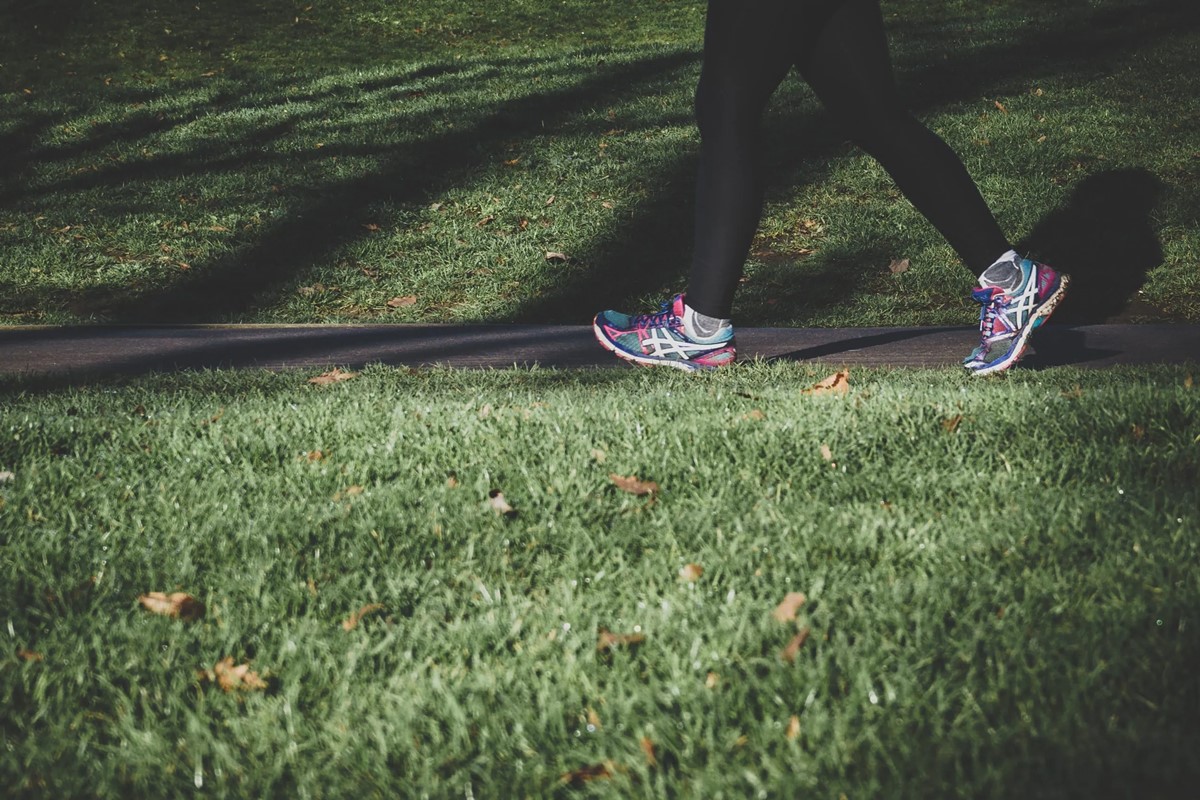Home>Misc>Featured>Why Would Oxygen Levels Make A Difference In Athletic Performance?


Featured
Why Would Oxygen Levels Make A Difference In Athletic Performance?
Modified: August 21, 2023
Learn why oxygen levels can impact athletic performance in this featured article. Discover the connection and its effects on endurance and recovery.
Introduction
Athletic performance is the result of a complex interplay between various factors, including strength, technique, nutrition, and conditioning. However, one crucial element that often goes unnoticed is the role of oxygen in athletic performance. Oxygen is essential for energy production and plays a vital role in determining an athlete’s endurance, stamina, and overall performance.
When we exercise, our muscles require more energy to meet the increased demands. This energy is generated through a process called aerobic metabolism, which relies on the presence of oxygen. Oxygen acts as a fuel to break down carbohydrates and fats, releasing the energy needed for muscle contraction and movement.
The oxygen that our bodies use during exercise is primarily delivered through the bloodstream. The red blood cells carry oxygen to the working muscles, where it is utilized for energy production. Consequently, the availability of oxygen directly impacts an athlete’s ability to sustain physical activity and perform at their best.
Many factors can affect the availability of oxygen during exercise, including altitude, fitness level, and lung function. Understanding how oxygen levels impact athletic performance can help athletes and coaches devise strategies to optimize their performance and enhance their training programs.
In this article, we will delve into the various ways in which oxygen levels influence athletic performance. We will explore how oxygen impacts energy production, aerobic capacity, muscular endurance, and recovery. We will also touch upon the benefits of altitude training for improving oxygen utilization. Finally, we will discuss strategies that athletes can employ to improve oxygen levels and ultimately enhance their performance.
The Role of Oxygen in Athletic Performance
Oxygen plays a vital role in athletic performance, acting as a crucial element in energy production and endurance. When we exercise, our muscles require more energy to meet the increased demands. This energy is generated through a process called aerobic metabolism, which relies on the presence of oxygen.
During exercise, our bodies use carbohydrates and fats as fuel sources. Oxygen acts as a catalyst, breaking down these fuel sources to release the energy needed for muscle contraction and movement. Without an adequate supply of oxygen, muscle cells cannot efficiently generate energy, leading to fatigue and decreased performance.
In addition to energy production, oxygen also influences an athlete’s aerobic capacity. Aerobic capacity refers to the body’s ability to transport and utilize oxygen during exercise. Higher oxygen uptake means the body can sustain higher intensities of physical activity for a longer duration.
When oxygen levels are limited, the body shifts to anaerobic metabolism, which relies on the breakdown of glucose in the absence of oxygen. However, anaerobic metabolism is less efficient and produces lactic acid as a byproduct, leading to fatigue and muscle soreness. By improving oxygen delivery and utilization, athletes can enhance their aerobic capacity, enabling them to perform at higher intensities for longer periods.
Oxygen levels also affect muscular endurance, which refers to the ability of muscles to sustain repeated contractions over time. As oxygen is essential in energy production, maintaining optimal oxygen levels allows muscles to continue contracting efficiently without experiencing early fatigue.
Moreover, oxygen plays a crucial role in the recovery process after exercise. When we exercise, our muscles produce metabolic byproducts such as lactic acid. Adequate oxygen intake assists in the removal of these byproducts, helping to reduce muscle soreness and promoting faster recovery.
Overall, oxygen has a significant impact on athletic performance. It is essential for energy production, aerobic capacity, muscular endurance, and post-exercise recovery. Understanding and optimizing oxygen levels can significantly improve an athlete’s performance and help them reach their full potential.
How Oxygen Levels Impact Energy Production
Oxygen plays a crucial role in energy production during exercise. It serves as a key component in the process of aerobic metabolism, where carbohydrates and fats are broken down to produce energy.
When we engage in physical activity, our muscles require more energy to meet the increased demands. This energy is generated through a series of chemical reactions within our cells, known as cellular respiration. The first stage of cellular respiration, called glycolysis, occurs in the absence of oxygen and breaks down glucose to produce a small amount of energy.
However, the real energy production occurs during the subsequent stages of cellular respiration, which are dependent on oxygen. Oxygen is necessary for the complete breakdown of glucose and fats, releasing a significantly larger amount of energy. This process is called oxidative phosphorylation and takes place within the mitochondria, often referred to as the powerhouse of the cell.
When oxygen is readily available, the energy production process is highly efficient. Oxygen acts as a final electron acceptor during oxidative phosphorylation, allowing the electrons to move through the electron transport chain and ultimately generating ATP (adenosine triphosphate), the molecule that serves as the energy currency for cells. The more oxygen available, the more efficiently ATP is produced, allowing muscles to contract and perform work at higher intensities.
On the other hand, when oxygen levels are limited, the body switches to anaerobic metabolism. Anaerobic metabolism is a less efficient process that occurs in the absence of oxygen and relies mainly on the breakdown of glucose. It produces energy quickly but generates lactic acid as a byproduct. The accumulation of lactic acid can lead to muscle fatigue, decreased performance, and even muscle cramps.
In summary, oxygen availability has a significant impact on energy production during exercise. Adequate oxygen levels allow for efficient aerobic metabolism, leading to optimal energy production and sustained muscle contractions. On the other hand, reduced oxygen levels force the body into less efficient anaerobic metabolism, resulting in fatigue and decreased performance. Therefore, optimizing oxygen intake is crucial in enhancing energy production and maximizing athletic performance.
Oxygen Levels and Aerobic Capacity
Aerobic capacity, also known as cardiorespiratory fitness, refers to the body’s ability to transport and utilize oxygen to meet the demands of physical activity. Oxygen plays a critical role in aerobic metabolism, the process by which the body produces energy during prolonged exercise.
Optimal oxygen levels are crucial for maximizing aerobic capacity. When oxygen is readily available, the body can efficiently break down carbohydrates and fats to generate ATP, the energy currency of the cells, providing the necessary fuel for sustained physical activity. Higher aerobic capacity allows athletes to perform at higher intensities for longer durations without experiencing fatigue.
Various factors influence an individual’s aerobic capacity, including genetic factors, training status, and oxygen-carrying capacity of the blood. The oxygen-carrying capacity is determined by the concentration of hemoglobin, the protein in red blood cells responsible for binding and transporting oxygen. Higher hemoglobin levels translate to a greater capacity to carry and deliver oxygen to the working muscles.
Regular aerobic exercise training can lead to significant improvements in aerobic capacity by enhancing oxygen delivery and utilization. This adaptation occurs through several mechanisms, including an increase in the number of red blood cells, increased capillarization of muscle tissue, and improved efficiency of the heart and lungs in delivering oxygen to the working muscles.
Furthermore, the body can adapt to higher altitude environments where oxygen availability is reduced. When exposed to high altitudes, the body compensates by producing more red blood cells to enhance oxygen-carrying capacity. This adaptation allows athletes to improve their aerobic capacity at sea level, giving them a competitive advantage.
Measuring aerobic capacity is commonly done using a method called VO2 max, which represents the maximum amount of oxygen an individual can utilize during exercise. Athletes with higher VO2 max values have a greater capacity to extract and use oxygen, leading to improved performance.
In summary, oxygen levels have a direct impact on an athlete’s aerobic capacity. Adequate oxygen availability allows for efficient energy production through aerobic metabolism, resulting in improved endurance and the ability to sustain high-intensity exercise. Regular exercise training and altitude exposure can further enhance aerobic capacity by improving oxygen delivery and utilization. Maximizing aerobic capacity is essential for athletes looking to excel in endurance-based sports and activities.
Effects of Oxygen Levels on Muscular Endurance
Muscular endurance is the ability of the muscles to sustain repeated contractions over an extended period. It is a crucial component of athletic performance, particularly in activities that require prolonged or repetitive muscle use, such as distance running, cycling, or swimming. Oxygen levels play a significant role in determining an athlete’s muscular endurance.
During exercise, muscles rely on a steady supply of oxygen to generate ATP and provide the energy necessary for contractions. When oxygen levels are optimal, aerobic metabolism efficiently breaks down carbohydrates and fats, releasing the energy required for muscle contractions. This allows the muscles to sustain activity for longer durations without experiencing early fatigue.
Conversely, when oxygen availability is limited, the body switches to anaerobic metabolism, which is less efficient and produces lactic acid as a byproduct. The accumulation of lactic acid contributes to muscle fatigue and discomfort, leading to a decrease in muscular endurance.
Higher oxygen levels translate to improved muscular endurance. The efficient breakdown of fuel sources in the presence of oxygen leads to a more sustainable energy supply for the muscles. Athletes with better aerobic fitness and higher oxygen-carrying capacity have a greater ability to maintain muscle contractions over extended periods.
Training programs aimed at improving muscular endurance often incorporate exercises that challenge the aerobic system and increase oxygen demand. Endurance-specific activities, such as long-distance running or cycling, can enhance the muscles’ ability to utilize oxygen, leading to improved endurance capabilities.
In addition to muscular endurance, oxygen levels also influence the recovery of muscles following exercise. Adequate oxygen intake helps remove metabolic byproducts, such as lactic acid, which accumulate during physical activity. Faster removal of these byproducts facilitates quicker recovery, allowing athletes to bounce back faster and perform better in subsequent training sessions or competitions.
In summary, oxygen levels have a significant impact on muscular endurance. Adequate oxygen availability enables efficient energy production, allowing the muscles to sustain contractions for longer periods without experiencing fatigue. Training programs aimed at improving muscular endurance typically include activities that challenge the aerobic system and increase oxygen demand. Furthermore, oxygen intake plays a crucial role in muscle recovery, helping to remove metabolic byproducts and promoting faster recovery. By optimizing oxygen levels, athletes can enhance their muscular endurance and improve their overall athletic performance.
Recovery and Oxygen Levels
Recovery is an essential aspect of athletic performance and plays a crucial role in optimizing training adaptations. Proper recovery allows the body to repair, adapt, and become stronger following intense exercise. Oxygen levels have a significant impact on the recovery process, ensuring efficient removal of metabolic byproducts and facilitating faster healing.
During exercise, metabolic byproducts such as lactic acid accumulate within the muscles. These byproducts can contribute to fatigue, muscle soreness, and decreased performance. Adequate oxygen intake plays a vital role in the removal of these byproducts through a process called oxygen debt repayment.
Oxygen debt repayment occurs after exercise when the body continues to consume additional oxygen to restore oxygen levels and clear away accumulated byproducts. By delivering oxygen to the muscles, the body is able to break down lactate and remove other metabolic waste products, aiding in the restoration of muscle function and reducing post-exercise discomfort.
Higher oxygen levels facilitate faster recovery by promoting efficient oxygen debt repayment. When oxygen is readily available, the body can effectively break down lactate and other waste products, helping to minimize muscle soreness and enhance recovery speed. This allows athletes to bounce back more quickly between training sessions or competitions.
In addition to aiding in the removal of metabolic waste products, oxygen also plays a role in tissue repair and regeneration. Oxygen is necessary for the formation of collagen, a protein that contributes to the strength and flexibility of muscles, tendons, and ligaments. Adequate oxygen levels facilitate the healing of damaged tissues, reducing the risk of injury and promoting overall recovery.
Furthermore, oxygen-rich blood carries essential nutrients and antioxidants to the muscles, aiding in the repair and replenishment process. These nutrients help replenish glycogen stores, repair muscle fibers, and support overall tissue recovery.
Strategies to optimize oxygen levels during the recovery phase include active recovery exercises, such as light jogging or cycling, that promote blood flow and oxygen delivery to the muscles. Additionally, adequate rest and proper nutrition, including a balanced intake of carbohydrates, protein, and antioxidants, can support the recovery process and ensure optimal oxygen availability.
In summary, oxygen levels have a significant impact on the recovery process. Adequate oxygen intake facilitates the removal of metabolic waste products, aids in tissue repair, and promotes overall recovery. Optimizing oxygen levels through active recovery exercises, rest, and proper nutrition can enhance the recovery process, allowing athletes to bounce back faster and perform at their best in subsequent training sessions or competitions.
Altitude Training and Oxygen Levels
Altitude training is a popular method used by athletes to improve their performance by manipulating oxygen levels. Training at high altitudes, where oxygen availability is reduced, triggers a series of physiological adaptations that can enhance an athlete’s oxygen utilization and aerobic capacity.
When athletes train at high altitudes, the reduced oxygen concentration stimulates the body to produce more red blood cells. The increased production of red blood cells leads to higher hemoglobin levels, enhancing the oxygen-carrying capacity of the blood. This adaptation allows athletes to transport and deliver more oxygen to the working muscles, improving endurance and overall performance.
Altitude training also stimulates the formation of new capillaries, the small blood vessels that supply oxygen and nutrients to the muscles. Increased capillarization improves oxygen delivery to the active muscles, optimizing energy production and reducing fatigue.
Training in a low-oxygen environment also prompts the body to make physiological changes in how it utilizes oxygen. The production of specific enzymes involved in aerobic metabolism is increased, improving the efficiency of oxygen utilization. This allows athletes to produce energy more efficiently, enhancing their endurance and stamina.
There are different approaches to altitude training, including training at high altitudes for an extended period, living at high altitudes but training at lower altitudes, and using simulated altitude devices like hypoxic tents or altitude chambers. Each approach has its advantages and considerations, such as acclimatization time, availability of training facilities, and potential risks associated with prolonged exposure to high altitudes.
Altitude training may not be suitable for all athletes, and it is essential to consult with coaches, trainers, and healthcare professionals before implementing an altitude training program. Additionally, proper monitoring of training load, hydration, and nutrition is crucial to maximize the benefits and minimize the risks of altitude training.
It is important to note that altitude training should be followed by a period of readjustment to sea level conditions to fully realize the benefits. The increase in red blood cells and physiological adaptations acquired during altitude training can provide a temporary performance boost when returning to lower altitude environments.
In summary, altitude training is a method used to enhance an athlete’s oxygen utilization and aerobic capacity. Training at high altitudes stimulates adaptations such as increased red blood cell production and improved oxygen utilization efficiency. Understanding the different approaches and considerations of altitude training is crucial for athletes looking to optimize their performance and gain a competitive edge.
Strategies to Improve Oxygen Levels for Performance Enhancement
Improving oxygen levels can significantly enhance an athlete’s performance by optimizing energy production, aerobic capacity, and muscular endurance. Here are some effective strategies to improve oxygen levels and ultimately boost performance:
1. Cardiovascular Exercise
Engaging in regular cardiovascular exercise, such as running, swimming, or cycling, can improve aerobic capacity and increase the body’s ability to utilize oxygen. Aim for at least 150 minutes of moderate-intensity aerobic exercise per week to reap the benefits.
2. Interval Training
Including high-intensity interval training (HIIT) in your workout routine can be an effective way to improve oxygen utilization. Alternating between short bursts of intense exercise and active recovery stimulates physiological adaptations that enhance oxygen uptake and utilization.
3. Strength Training
Don’t overlook the importance of strength training. Building muscular strength and endurance can improve oxygen delivery to the muscles and enhance overall performance. Incorporate resistance exercises into your training routine to reap the benefits.
4. Breathing Exercises
Practicing specific breathing exercises, such as diaphragmatic breathing or deep breathing, can help improve lung capacity and oxygen uptake. Focus on slow, deep breaths to fully expand the lungs and maximize oxygen intake.
5. Altitude Training
Consider incorporating altitude training into your training regimen. Exposing yourself to high-altitude environments can stimulate physiological adaptations that improve oxygen-carrying capacity and enhance aerobic capacity. Consult with professionals to create a safe and effective altitude training plan.
6. Proper Hydration
Staying properly hydrated is essential for optimizing oxygen levels. Dehydration can lead to reduced blood volume and thicker blood, impairing oxygen delivery to the muscles. Drink enough fluids throughout the day, especially during exercise, to maintain optimal hydration levels.
7. Well-Balanced Nutrition
Eating a well-balanced diet rich in fruits, vegetables, whole grains, and lean proteins provides the essential nutrients and antioxidants needed for optimal oxygen utilization and energy production. Include iron-rich foods, such as leafy greens and lean meats, to promote healthy red blood cell production.
8. Sleep and Recovery
Prioritize quality sleep and recovery to allow the body to regenerate and optimize oxygen levels. Lack of sleep can negatively impact oxygen utilization and overall performance. Aim for 7-9 hours of uninterrupted sleep each night.
By implementing these strategies, athletes can improve their oxygen levels, enhance energy production, and achieve higher levels of performance. It is important to incorporate these strategies gradually and consistently, personalized based on individual needs and goals. Consult with coaches, trainers, and healthcare professionals to develop a well-rounded approach to optimize oxygen levels and maximize performance.
Conclusion
Oxygen levels play a pivotal role in athletic performance, influencing energy production, aerobic capacity, muscular endurance, and recovery. Adequate oxygen availability enables efficient aerobic metabolism, allowing for sustained energy production and enhanced endurance. Athletes can improve oxygen levels by incorporating strategies such as cardiovascular exercise, interval training, strength training, breathing exercises, altitude training, proper hydration, well-balanced nutrition, and adequate sleep and recovery.
Understanding the impact of oxygen on athletic performance can help athletes and coaches develop training programs and strategies to optimize performance. By focusing on improving oxygen levels, athletes can enhance their energy production, endurance, and overall athletic abilities. These considerations are especially vital for endurance-based sports and activities that rely heavily on aerobic metabolism and sustained muscle contractions.
It’s important to note that individual responses to training and altitude may vary, and it is advisable to consult with professionals to tailor training programs based on specific needs and goals. Monitoring oxygen levels and making adjustments to training and recovery strategies accordingly can lead to improved performance outcomes.
In conclusion, optimizing oxygen levels through various strategies is an essential aspect of enhancing athletic performance. By prioritizing oxygen availability and utilization, athletes can unlock their full potential, push their limits, and achieve remarkable results in their chosen sports and activities.









